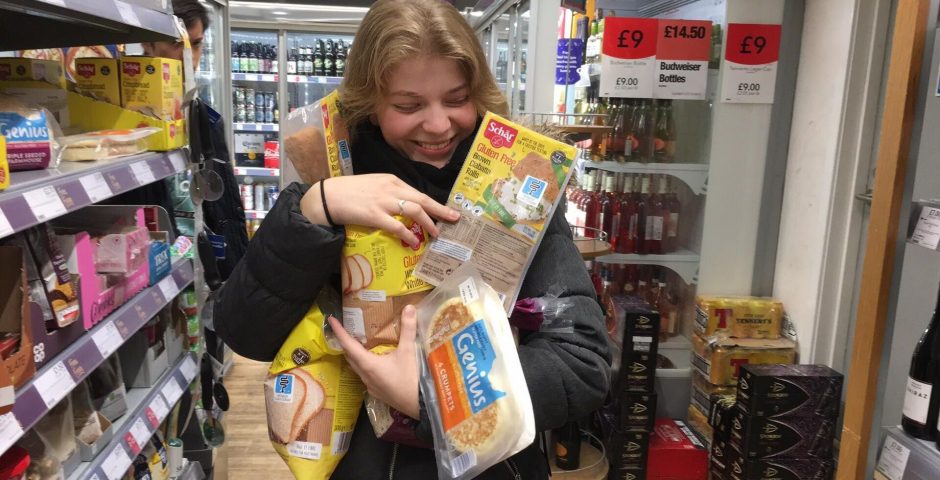
The struggles and perks of having coeliac disease as a student
Still feeding my bread addiction
As a fierce lover of everything that involves bread and pasta, being diagnosed with coeliac disease this summer has had a big impact on my daily life. A gluten-free diet – especially in the West where our cuisines are very gluten-heavy – can be a big struggle. A gluten-free diet excludes many staple foods, is very restrictive for eating out and can be very expensive – on top of making sufferers the punchline of everyone's jokes.
What is coeliac disease?
Coeliac disease is an autoimmune disorder caused by gluten intolerance. You become coeliac by inheriting the genetic predispositions for the disease (thanks Mum and Dad), consuming gluten (in my case probably 5 times a day on average), and having the disease triggered. Ingesting gluten when you're a coeliac leads to the surface of the small intestines being damaged, thereby inhibiting the body from absorbing important nutrients from food. It can also lead to a number of serious health-related issues.
Around 200 symptoms of coeliac disease have been identified, including bloating and flatulence, diarrhoea, abdominal pain, indigestion and constipation. Yummy.
There is currently no way to treat coeliac disease or to cure it, the only solution is a completely gluten-free diet.
What is gluten?
Gluten is a dietary protein found in wheat, barley and rye. Almost all pastas, noodles, breads and pastries, crackers, baked goods, cereals and granolas contain these cereals, and are therefore incompatible with a gluten-free diet. Additionally, many foods that aren't made of gluten themselves often may contain gluten due to cross contamination.
So what grains can you eat? Rice, rice and more rice. Also quinoa, lentils and corn. Tasty.

Lentils always got you
The free-from section – a blessing and a curse
The past few years have blessed us with a continually growing supply of free-from foods, which are increasingly available in every grocery store. Edinburgh especially caters well to diets with any kinds of restrictions. Evidently there is a growing demand for gluten-free products, which you can now easily get everywhere you go. Gluten-free bread, pastries, pastas, oats, baked goods, and wraps are all available. As my doctor put it: "you chose a good time to be gluten intolerant". I'm not sure if there is any such thing, but if there is, then it certainly is now.

My second home
That being said, free-from sections are still a new concept, and a lot of products are still missing. Grocery stores have endless choices when it comes to pasta shapes, types of bread and even flavours of wraps. In the free-from section you're lucky if you find some fusilli.
Eating out
Being gluten intolerant automatically makes you a highly impractical person to take out for dinner. A nice lunch at Nile Valley, or a Domino's before a night out? Nope. Even Asian foods are tricky because soy sauce contains gluten.
You can forget about food on the go as well. Hungry while studying at the library? Grab a quick sandwich or a meal deal? Forget it. Maybe you can get some carrot sticks or an apple.
Fortunately, more and more places are aware of people's dietary restrictions. Loads of restaurants offer gluten free pizza or pasta, and even gluten free bread. Also, most places are really good about marking what is gluten free on their menus – this makes our lives a lot easier.

Wonderful
Money
Of course, a gluten-free diet can be very cost-efficient if you stick to eating rice and vegetables. Unfortunately, because I'm a bread and pasta addict, that kind of lifestyle just doesn't suit me.
Gluten free bread, pasta, flour, breakfast cereals and baked goods are usually a lot more expensive than regular gluten containing foods. Bread, for example, is usually 5 times more expensive when buying gluten-free versions. On a student budget this is the opposite of practical, and before you know it your weekly shop has caused you to blow through your student loan in a matter of hours.

40p per kg

£2.30 per kg
Free food from the NHS
Unbeknownst to a lot of people, the NHS prescribes gluten free staples to people diagnosed with coeliac disease in order for them to properly manage their diets. Basically: if you're coeliac you can get free food from the NHS, because a gluten-free diet is the only treatment for your condition.
This is extremely helpful for people who live in areas where gluten-free alternatives are less readily accessible and available. It is also a really good financial help because gluten-free products can be so expensive. If you are between 19 and 59, you can get up to 18 units of gluten-free products a month, which amounts to 18 portions of pasta or bread, or 36 pizza bases. The items on offer include bread, flour, biscuits and crackers, pasta, pizza bases, breakfast cereals, and oats.

Gluten free digestives are my favourite prescription
Click here for more information on gluten free food prescriptions and how you can gain access to them.









































